While most people have heard of sumo wrestling and know it’s associated with Japan, they probably know little else about it, and that can make a sumo match seem a little confusing. In actuality, while wrestlers train hard to learn complicated techniques, the sport of sumo is not that complicated. There aren’t many rules and it’s pretty easy to understand, even if you don’t speak Japanese.
Here is a beginner’s guide to sumo, complete with a quick history, a rule breakdown, and an explanation of the people you will see at a match:
A Quick History of Sumo.
The first sumo match took place approximately 1,500 years ago as a form of entertainment for the royal courts. Over time, sumo evolved to a more publicly accessible form of entertainment, and eventually became the national sport of Japan. (And surprisingly, early sumo wrestlers were not the hulking figures they are today – they were more lean and muscular.)
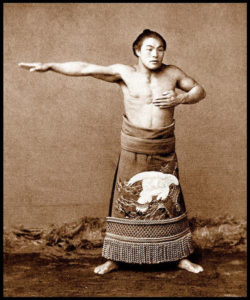
The Rules of Sumo.
In sumo, the match starts when both wrestlers put both fists on the ground. Until then, there is a lot of ceremonial positioning and mock starts. The goal in a sumo match is to knock your opponent out of the ring or get them to touch the ground with any body part other than their feet. (And those are pretty much the only two rules, which makes for some really exciting matches, as anything from head-butting to grappling is allowed). Crowds seem to really get amped up when the wrestlers grapple and the match takes longer (and it’s also really neat to see the different techniques the wrestlers use). If you think about it, there’s surprisingly a lot of physics involved, with things like leverage and centrifugal force being used strategically by the wrestlers.
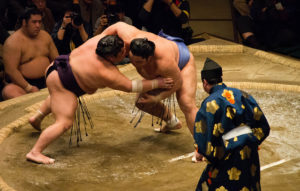
Sumo Referees.
You can always tell a sumo referee, called a gyoji, because he will be the normal-sized guy in the ring wearing the colorful kimono and doing a lot of yelling during the match. The gyoji’s role is both ceremonial and functional, as he (and yes, it is always a man) is made to resemble a Shinto priest and he officiates each match.
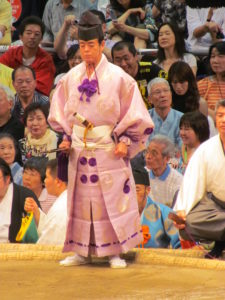
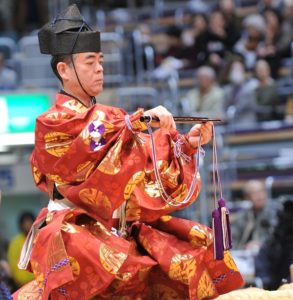
Gyoji have a very prestigious job. Typically, each sumo stable (where wrestlers live) has one gyoji, and there are only about 40 gyoji in all of Japan. Gyoji usually join the Sumo Association as teenagers and stay their entire working life, retiring at age 65. Their main duties are to officiate the matches, determining when each match begins (as there is a time limit the wrestlers are allowed to do ceremonial displays and mock starts) and when it ends (by alerting the rikishi they have stepped out of the ring for example). The gyoji will point his fan (called a gunbai) at the winner when the match is over. While it doesn’t happen often, the decision of the gyoji can be challenged (and overturned) by sumo officials seated at a table just outside the ring.
Sumo Life is Tough.
While it may be tempting to think of sumo wrestlers as just overweight, out of shape guys in thongs, in fact, wrestlers (known as rikishi) do almost nothing but train. Rikishi live at specialized locations (called stables), where they train all day, eat special high-calorie food (called chankonabe), and live a very regimented lifestyle full of rules. It’s actually a very hard life and few make it to the professional level. But the rikishi who gets to be a yokozuna (the highest rank in sumo) is pretty much the equivalent of a rock star.
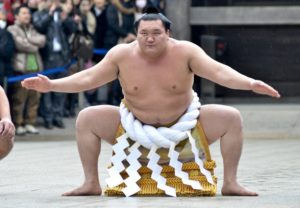
So now that you know a little about Japan’s national sport and can appreciate all the rikishi go through just to make it into the ring, if you ever get the chance to go to sumo, go! And because there aren’t many rules, it’ s a pretty easy sport to follow too. Before you know it, you’ll be rooting for your favorite rikishi with the rest of the crowd.

